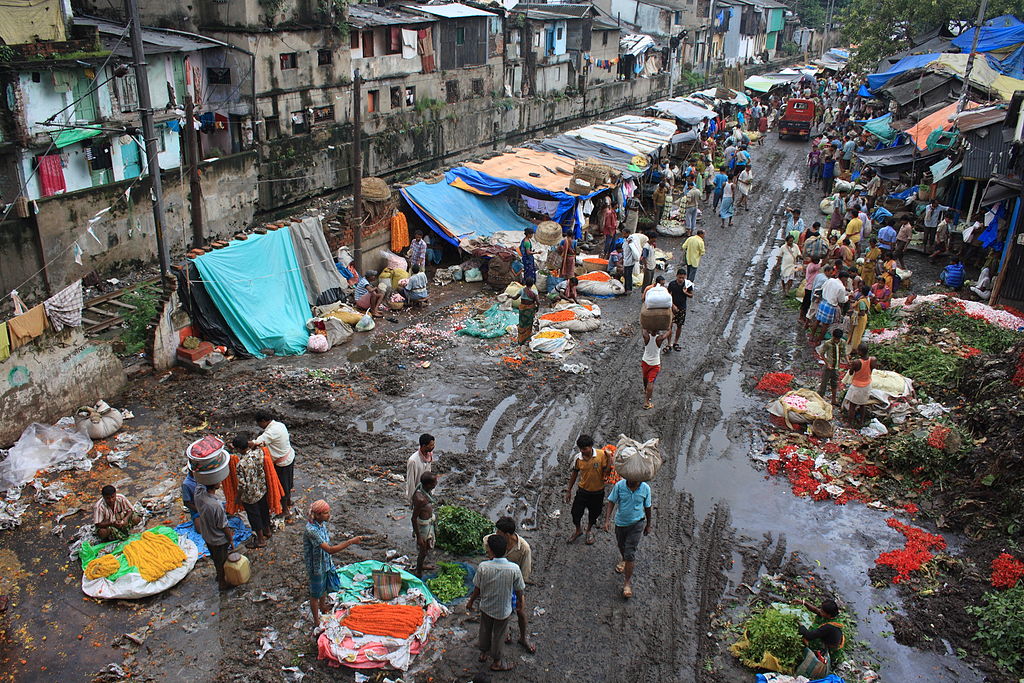There is discontent growing in rural India after several consecutive droughts for the first time in 30 years, forcing Modi to allocate more funds for social assistance programs.
In addition, he needs to increase salary of civil servants this year. This should be done once in a decade, during the fiscal year that starts on 1 April.
At the same time, bond investors want Modi to tighten the belt and stick to previously stated goal to reduce the federal budget deficit to 3.5% of GDP.
Head of Reserve Bank of India Raghuram Rajan warned that undisciplined budget can increase the yield of the bonds. This would endanger the credit ratings of India, heat up inflation and discourage investors.
"Investors want lower interest rates, higher revenues from various types of assets and consolidation of budgets, - said Sonal Verma, economist at Nomura Holdings Inc.
Voters want a better life, which will require the government to spend more, and more to borrow. It is very difficult to please both of them."
Budget deficit
India's fiscal deficit - both federal and local governments - is the biggest among major Asian economies at the moment.
Last year, Modi has decided to deviate from the strategy to reduce the deficit and move to increase spending on infrastructure instead.
Currently, it is planned to reduce the budget deficit to 3.5% of GDP within the next financial year, and up to 3% in March 2018.
At the same time, economists believe that Modi will not be able to achieve these goals: the deficit projected for the next year will be 3.6% of GDP, and 3.4% in a year.
Standards of living
India is one of the fastest growing economies in the world. At the same time, this is a home for the poorest people on the planet.
According to official data, India has created 296 thousand jobs from June 2014 to June 2015. They present eight major sectors, compared with 1 million people becoming part of the labor force each month.
Low income per capita limit tax base, increase need for subsidies and planned growth of wages of 10 million civil servants and military veterans. In total, all of this will increase total cost of salaries at 1.1 trillion rupees ($ 16 billion) over the next fiscal year.
Earnings
India’s income in 2012 amounted to 12.5% of GDP - the lowest rate among over 100 countries served by the World Bank.
If India enhance services tax to 16% compared with 14.5%, it will increase the total tax income by 15%, as estimated by the Bank of India.
Costs
In the last two budgets, Modi had increased spending on infrastructure and reduced subsidies.
Higher spending on public sector salaries and pensions will lead to difficulties when sticking to plans to fiscal consolidation, said Radhika Rao, an economist at DBS Bank Ltd.
Rural India
Nearly half of the Indian population, which is 1.3 billion people, is engaged in agriculture.
The total volume of investment in this sector is 2.5% of GDP.
Modi’s new budget
In the new budget, Prime Minister Narendra Modi is sticking to the plan to reduce the budget deficit in the next fiscal year. However, he is also going to assist farmers, bearing in mind Head of Reserve Bank of India Raghuram Rajan’s warning that any deviation could undermine India’s economic growth.
As a result, the deficit will decrease to 3.5% of GDP planned for the year, which starts on 1 April.
"The budget deficit’s target level of 3.5% seems reasonable," - said Rahul Bajoria, an economist at Barclays Plc.
If this goal is accompanied by a reasonable estimate of costs, this may lead to an increase in the infrastructure and private investment sectors, he said.
As the next fiscal year is also the year of elections in nine states, Modi has to provide assistance to farmers suffered from the drought.
It is worth noting that about 70% of India's population lives in small villages.
source: bloomberg.com
In addition, he needs to increase salary of civil servants this year. This should be done once in a decade, during the fiscal year that starts on 1 April.
At the same time, bond investors want Modi to tighten the belt and stick to previously stated goal to reduce the federal budget deficit to 3.5% of GDP.
Head of Reserve Bank of India Raghuram Rajan warned that undisciplined budget can increase the yield of the bonds. This would endanger the credit ratings of India, heat up inflation and discourage investors.
"Investors want lower interest rates, higher revenues from various types of assets and consolidation of budgets, - said Sonal Verma, economist at Nomura Holdings Inc.
Voters want a better life, which will require the government to spend more, and more to borrow. It is very difficult to please both of them."
Budget deficit
India's fiscal deficit - both federal and local governments - is the biggest among major Asian economies at the moment.
Last year, Modi has decided to deviate from the strategy to reduce the deficit and move to increase spending on infrastructure instead.
Currently, it is planned to reduce the budget deficit to 3.5% of GDP within the next financial year, and up to 3% in March 2018.
At the same time, economists believe that Modi will not be able to achieve these goals: the deficit projected for the next year will be 3.6% of GDP, and 3.4% in a year.
Standards of living
India is one of the fastest growing economies in the world. At the same time, this is a home for the poorest people on the planet.
According to official data, India has created 296 thousand jobs from June 2014 to June 2015. They present eight major sectors, compared with 1 million people becoming part of the labor force each month.
Low income per capita limit tax base, increase need for subsidies and planned growth of wages of 10 million civil servants and military veterans. In total, all of this will increase total cost of salaries at 1.1 trillion rupees ($ 16 billion) over the next fiscal year.
Earnings
India’s income in 2012 amounted to 12.5% of GDP - the lowest rate among over 100 countries served by the World Bank.
If India enhance services tax to 16% compared with 14.5%, it will increase the total tax income by 15%, as estimated by the Bank of India.
Costs
In the last two budgets, Modi had increased spending on infrastructure and reduced subsidies.
Higher spending on public sector salaries and pensions will lead to difficulties when sticking to plans to fiscal consolidation, said Radhika Rao, an economist at DBS Bank Ltd.
Rural India
Nearly half of the Indian population, which is 1.3 billion people, is engaged in agriculture.
The total volume of investment in this sector is 2.5% of GDP.
Modi’s new budget
In the new budget, Prime Minister Narendra Modi is sticking to the plan to reduce the budget deficit in the next fiscal year. However, he is also going to assist farmers, bearing in mind Head of Reserve Bank of India Raghuram Rajan’s warning that any deviation could undermine India’s economic growth.
As a result, the deficit will decrease to 3.5% of GDP planned for the year, which starts on 1 April.
"The budget deficit’s target level of 3.5% seems reasonable," - said Rahul Bajoria, an economist at Barclays Plc.
If this goal is accompanied by a reasonable estimate of costs, this may lead to an increase in the infrastructure and private investment sectors, he said.
As the next fiscal year is also the year of elections in nine states, Modi has to provide assistance to farmers suffered from the drought.
It is worth noting that about 70% of India's population lives in small villages.
source: bloomberg.com



















